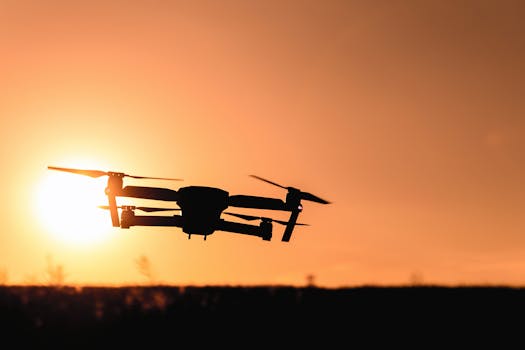Introduction
As the world grapples with the pressing need for sustainable energy sources, tidal energy has emerged as a promising solution. With its predictable patterns and immense potential, harnessing tidal energy can significantly contribute to the global energy mix. Recent advancements in technology, particularly the use of underwater drones, are revolutionizing the way we harvest this renewable resource. This article explores the technology behind underwater drones and their role in harvesting tidal energy.
The Promise of Tidal Energy
Tidal energy is generated by the gravitational pull of the moon and the sun, creating tidal currents that can be harnessed for power. Unlike solar and wind energy, tidal energy is highly predictable, making it an attractive option for energy generation. Some key benefits of tidal energy include:
- Reliability: Tides are consistent and can be forecasted accurately.
- Environmental Impact: Tidal energy systems have a low carbon footprint and minimal emissions.
- Longevity: Tidal energy infrastructure can have a lifespan of over 25 years with proper maintenance.
Underwater Drones: A Game Changer
Underwater drones, or remotely operated vehicles (ROVs), are becoming essential tools in the exploration and harvesting of tidal energy. These drones are equipped with advanced sensors and cameras, allowing them to operate in challenging underwater environments. Their applications in tidal energy include:
- Site Assessment: Drones can conduct detailed surveys of potential tidal energy sites, mapping the seabed and assessing environmental conditions.
- Maintenance and Inspection: Regular inspections of tidal energy infrastructure can be performed by drones, reducing the need for human divers and minimizing risks.
- Data Collection: Drones can gather real-time data on water currents, temperature, and salinity, which are crucial for optimizing energy generation.
Technological Innovations in Underwater Drones
The technology behind underwater drones has advanced significantly in recent years. Key innovations include:
- Autonomous Navigation: Many underwater drones are now equipped with AI-driven navigation systems that allow them to operate autonomously, reducing the need for human intervention.
- Enhanced Battery Life: Improvements in battery technology have extended the operational time of underwater drones, enabling them to cover larger areas without needing to recharge.
- Advanced Sensors: Modern drones come with high-resolution cameras, sonar systems, and environmental sensors that provide comprehensive data for tidal energy projects.
Case Studies: Successful Implementations
Several projects around the world have successfully integrated underwater drones into their tidal energy operations. Notable examples include:
- Orbital Marine Power: This company has developed the O2 tidal turbine, which utilizes underwater drones for site surveys and maintenance. Their drones have helped optimize turbine placement, leading to increased energy output.
- Minesto: The company’s Deep Green technology employs underwater drones to harness tidal currents. Their drones have demonstrated the ability to operate efficiently in various tidal conditions, showcasing the versatility of this technology.
- Marine Energy Wales: This initiative has utilized underwater drones for environmental monitoring and site assessments, ensuring that tidal energy projects are sustainable and minimally invasive to marine ecosystems.
Challenges and Future Prospects
Despite the promising advancements, several challenges remain in the integration of underwater drones in tidal energy harvesting:
- Cost: The initial investment for underwater drones and associated technology can be high, potentially limiting their adoption.
- Regulatory Hurdles: Navigating the regulatory landscape for underwater operations can be complex and time-consuming.
- Technical Limitations: While technology is advancing, underwater drones still face challenges related to communication and data transmission in deep-sea environments.
Conclusion
Underwater drones represent a significant technological advancement in the quest to harness tidal energy. Their ability to conduct site assessments, perform maintenance, and collect valuable data makes them indispensable in the renewable energy sector. As the world continues to seek sustainable energy solutions, the integration of underwater drones in tidal energy harvesting will likely play a crucial role in shaping the future of energy production. By overcoming existing challenges and leveraging technological innovations, we can unlock the full potential of tidal energy, paving the way for a cleaner, more sustainable future.
